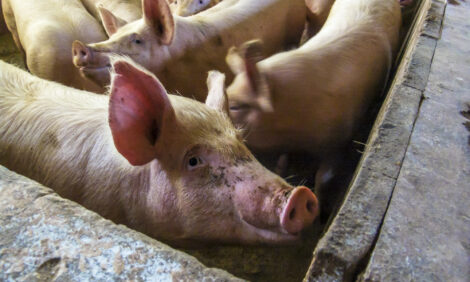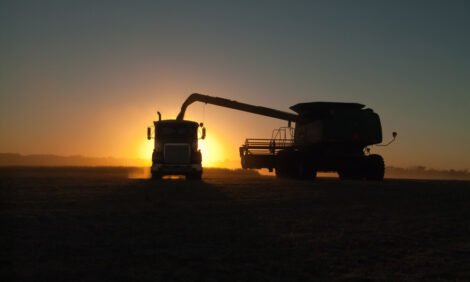Animal Identification Benefits Livestock Industry
WEST LAFAYETTE - The plan to implement an animal identification program in response to the recent discovery of a U.S. cow infected with mad cow disease stands to benefit the livestock industry as a whole, said Ken Foster, a Purdue University agricultural economist.
|
Need a Product or service?
|
|
Purdue News
|
"The plan to be able to identify the origin of any animal, whether it's cattle or hogs or sheep, will, in the end, cut costs to both farmers and consumers," Foster said.
"The economic cost of any livestock disease is lessened by interrupting the cycle of the disease and minimizing the number of animals lost. It's all about speed, and better identification and tracking systems will help."
Agriculture Secretary Ann M. Veneman announced last week that the United States Department of Agriculture will immediately put in place a system of animal identification. The announcement came in the wake of the nation's first confirmed case of bovine spongiform encephalopathy, or BSE, the technical name for mad cow disease.
Details about the program are limited, but according to Foster the USDA Animal and Plant Health Inspection Service, or APHIS, has been developing an identification program with the goal of tracing an infected animal's farm of origin within 48 hours.
While many European nations have detailed livestock tracking systems in place, no national-level animal identification program exists in the United States, a shortcoming Foster said is partly due to the fact that the country has not had disease outbreaks of the magnitude seen in Europe.
"We've been a bit behind other nations in developing a tracking system, but the reason we've been so slow is that we've been so good at keeping diseases out," Foster said. "Our diligence and success at monitoring animal disease may be part of what put us at a disadvantage now that BSE has shown up here."
In addition, he said the country of origin labeling, or COOL, provisions of the last farm bill prohibited the USDA from mandating animal identification at the farm level. This is something that will have to be ironed out in Congress this spring, Foster said.
"The farming community has resisted the idea of farm of origin labeling because it could potentially place farmers in a liability position for things they have little or no control over, such as an E. coli outbreak that could have occurred at a processing plant," he said.
Foster said that implementation of a tracking program will be especially helpful should other more contagious livestock diseases, such as foot-and-mouth disease, show up in the United States.
"Traceability has broad applicability and broad benefits - if a new disease shows up here, we'll have a system in place to stamp it out before it gets out of hand," he said.
While implementing a tracking system will increase the amount of recordkeeping farmers are responsible for, Foster said he doesn't expect it to be difficult for producers to comply with the animal identification requirements.
"Most farms are already keeping some form of records and using an ear tag identification system," he said. "The cow in Washington was traced back fairly quickly, which indicates that at least some record of the animal's origin exist."
However, Foster also said that the delay in tracking the infected cow's offspring and other cows that came to the United States with the infected cow indicate the need for a tracking system.
But only certain producers may be forced to shoulder most of the cost of implementing such a system, said Ron Lemenager, beef specialist and professor of animal science.
"The cost of implementing a tracking system may unfairly burden cow-calf producers, as opposed to larger feedlot operators," he said.
"The real problem is that this will be a cost borne by the cow-calf producers, because tracking needs to start at the farm of origin. I don't see where a feedlot operator will pay the cost of tracking."
Lemenager also pointed out that a nationwide tracking system necessitates a nationwide database. He questions who will control that database and who will have access to it.
"In the event of a disease outbreak, we need to have access to individual animal records, but we also want to restrict access to those records to ensure some degree of privacy to producers," he said.
Foster said he did not know how long it would take for the USDA to fully implement an animal identification program, but he cautioned that it may take a few years for any new program to have a noticeable impact.
"We'll need to let a flow of animals through under the new regulations before we see the full benefits," he said. "We could put an identification program in place tomorrow, but how soon we'll see its impact will initially depend on the individual animal, its age, species and the nature of any disease."
Nevertheless, he suggests that a program of this type is essential if the United States intends to regain its share of the export market and maintain its customer base at home.
"The ability to trace and eliminate disease will be a demand we need to meet to satisfy world markets and eliminate concerns on the part of the consumer," he said.
For additional news and information about BSE, click the mad cow disease banner on the Purdue Extension home page at http://www.ces.purdue.edu.
Source: Purdue News Service - 6th January 2004


















